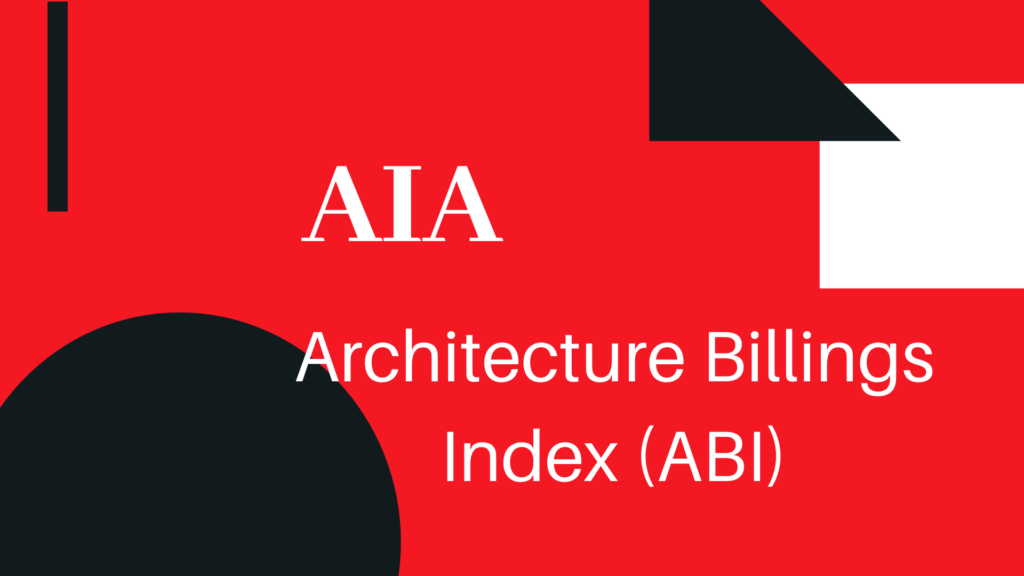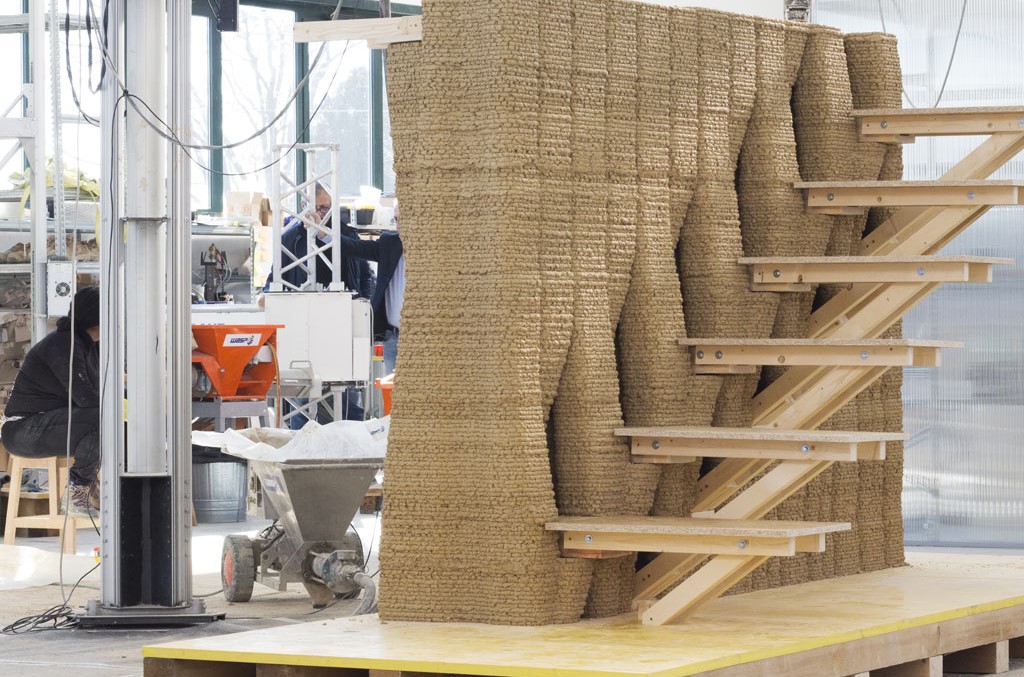Tag archives for: architects

In a recent article by the New York Post titled “NYC Landlords Luring Workers to Offices with Fancy Perks,” https://nypost.com/2024/03/20/real-estate/nyc-landlords-luring-workers-to-offices-with-fancy-perks/ the spotlight shines on the enticing perks offered by landlords to attract employees back to the office amidst shifting work dynamics. While these perks may seem appealing for large corporations, the landscape for small businesses, particularly architecture and design firms with fewer than 50 employees, presents different challenges and considerations.
The allure of onsite amenities such as fitness centers, gourmet cafeterias, and communal spaces undoubtedly holds sway for many professionals. However, for smaller firms nestled within NYC’s vibrant architecture and design scene, the feasibility and practicality of such offerings may vary significantly.
In this blog post, we delve into the nuances of office perks through the lens of small architecture and design firms. While acknowledging the allure of these amenities, we explore why the strategies highlighted in the article might not seamlessly translate to the realities faced by smaller businesses.
As advocates for the growth and sustainability of small firms, we’ll examine:
1. Budget Constraints: The financial implications of implementing extravagant perks for firms operating within tighter budgets.
2. Cultural Dynamics: How small firms’ unique culture and ethos influence the appeal and relevance of office perks.
3. Practical Solutions: Alternative strategies tailored to the needs and aspirations of small architecture and design firms, fostering employee engagement and retention without breaking the bank.
By critically analyzing the insights from the article within the context of small business operations, I aim to equip our readers with practical perspectives and actionable strategies to navigate the evolving landscape of workplace amenities. Join us as we unravel the intricacies of office perks and chart a course tailored to the distinct needs of small architecture and design firms in the vibrant ecosystem of NYC.
Small architecture and design firms must carefully consider every expenditure to ensure optimal resource allocation. While the lavish perks mentioned in the article may foster a desirable work environment, they often come with a hefty price tag, directly and in a building that includes these amenities in the rent. Small firms, particularly those in the startup phase or experiencing rapid growth, may need help to justify such expenses. Instead, prioritizing investments in essential resources like cutting-edge design software, professional development opportunities, or collaborative workspaces tailored to the specific needs of architects and designers can yield more tangible benefits within a constrained budget.
The culture of a small architecture or design firm often thrives on intimacy, collaboration, and a shared passion for creativity. Unlike large corporations, where employees may be drawn to onsite amenities as a substitute for a sense of community, small firms typically foster a familial atmosphere where personal connections and shared values reign supreme. As such, the allure of extravagant perks may pale compared to the intrinsic rewards of working closely with like-minded colleagues on stimulating projects that align with one’s design philosophy. Cultivating this unique culture becomes a cornerstone of employee satisfaction and retention, superseding the need for flashy office amenities.
While acknowledging the appeal of office perks, small architecture, and design firms can adopt more pragmatic approaches to enhance the workplace experience for their employees. Emphasizing flexibility in work arrangements, providing opportunities for professional growth and mentorship, and fostering a collaborative work environment where employees feel valued and empowered can significantly impact job satisfaction and retention. Investing in wellness programs, such as yoga classes, mindfulness sessions, or ergonomic workstations, can promote employee well-being without straining the budget. By aligning perks with the values and aspirations of their workforce, small firms can cultivate a vibrant workplace culture that sets them apart in a competitive market.
In conclusion, while the allure of fancy office perks may capture headlines, the reality for small architecture and design firms in NYC paints a different picture. Budget constraints, cultural dynamics, and the need for practical solutions tailored to the unique needs of small businesses necessitate a nuanced approach to enhancing the workplace experience. Small firms can create environments where employees thrive and excel by prioritizing investments that align with their values, fostering community and belonging, and embracing flexibility and innovation. As the work landscape continues to evolve, small architecture and design firms stand poised to lead the way in redefining what constitutes a fulfilling and enriching workplace experience in the dynamic metropolis of New York City.
#ArchitectureNYC #DesignFirms #SmallBusinessNYC #OfficePerks #WorkplaceCulture #SmallFirmSolutions #BudgetFriendlyPerks #EmployeeEngagement #WorkplaceWellness #CreativeWorkspaces #NYCDesignScene #InteriorDesigners #ArchitectsLife #OfficeAmenities #SmallBizTips #StartupStrategy #DesignPhilosophy #TeamCollaboration #WorkLifeBalance #ProfessionalDevelopment #SmallBizCulture #EmployeeRetention #InnovativeWorkplaces #CareerGrowth #ArchitecturalTrends #DesigningSuccess #NYCBusiness #InteriorDesignIdeas #ArchitectureInspiration #SmallBizLeadership

This article marks the second in my series that explores renowned historical buildings, speculating on integrating contemporary sustainable materials and energy-efficient measures not initially available during their construction to achieve Platinum LEED Certification. In this installment, we gaze on Frank Lloyd Wright’s iconic Fallingwater, erected in 1935. David.
Introduction
Frank Lloyd Wright’s Fallingwater is a gem of American architecture, a 1935 creation that continues to captivate admirers today. Yet one question beckons: what would it take to qualify this iconic structure for Platinum LEED Certification using today’s sustainable materials and energy-efficient measures? In this blog post, we’ll precisely explore that.
The 1935 Reality
When Fallingwater was built, the materials available represented the best that 1935 had to offer—steel, concrete, and glass made using energy-intensive methods, with little thought to environmental impact.
A 2023 Vision
Imagine applying today’s sustainable construction techniques and materials to elevate this iconic structure. For the reader’s benefit, let’s explore real-world examples of how various materials have evolved and can contribute to a more sustainable Fallingwater.
Solar Panels and Green Roofing: The Future of Clean Energy
Fallingwater was conceived before the advent of solar panels and green roofing. Today, these technologies are integral to achieving Platinum LEED Certification. High-efficiency solar panels could convert ample sunlight into clean energy, significantly reducing the building’s reliance on nonrenewable power sources. A green roof would act as a natural insulator and manage stormwater, decreasing the building’s environmental impact.
Advanced Glazing and Insulation: Harnessing Energy Efficiency
In 1935, the energy-efficient, low-emissivity (LowE) glass and high-performance insulation materials we have today weren’t even a thought. Retrofitting Fallingwater with modern glazing can drastically improve its thermal performance, keeping interiors cool in the summer and warm in the winter. Such advancements go a long way in reducing energy consumption, an essential criterion for Platinum LEED Certification.
Smart Building Systems: Intelligent Resource Management
Intelligent building systems like automated lighting and HVAC controls are a far cry from what was available in the 1930s. By incorporating smart technologies, we can achieve real-time energy monitoring and automatically adjust settings to optimize resource consumption.
Water Efficiency Measures: The Future is Now
Incorporating water-efficient fixtures and rainwater harvesting systems can substantially reduce water usage. Low-flow toilets, faucets, and a rainwater collection system for non-potable uses make the structure more sustainable and contribute to Platinum LEED Certification requirements.
Sustainable Building Materials: The Eco-Friendly Choice
The original construction materials were constrained by what was available in 1935. Today, we can opt for eco-friendly alternatives such as reclaimed wood, recycled steel, and low-VOC finishes. These have a lower environmental impact and contribute to a healthier indoor environment.
Conclusion
The opportunity to marry Fallingwater’s timeless design with the advances in sustainable building materials and techniques offers an exciting avenue to protect and elevate this masterpiece for future generations. Technology exists; all it takes is the will to apply it. By doing so, we pay homage to Frank Lloyd Wright’s original vision for Fallingwater and adapt it to meet the challenges and opportunities of the 21st century. Thus, we can transform Fallingwater into a monument of the past and a model of sustainable living for the future.
While Fallingwater remains an architectural marvel, it’s intriguing to consider how it could meet today’s sustainability standards. With modern advancements in clean energy, insulation, Smart Building Systems, water efficiency, and sustainable materials, this iconic building could preserve its historical significance and symbolize environmental responsibility. Retrofitting these features would elevate it to Platinum LEED Certification status, marrying its timeless design with today’s eco-conscious ethos.
About Consulting For Architects, Inc. Careers (CFA)
Helping architects, interior designers, and building design professionals find better career opportunities nationwide every day since 1984. Send your resume and portfolio to [email protected].
Sources and Acknowledgments
This article was crafted using the author’s original ideas, research data, insights from personal and professional experience, and an assist from ChatGPT, a large language model developed by OpenAI. For more details, refer to OpenAI. (2023). ChatGPT (August 3 Version).
Architecture: Sustainability Revisited
|
21stCenturyDesign, architects, ArchitecturalConservation, ArchitecturalInnovation, architecture, CleanEnergy, Consulting For Architects, David McFadden, EcoFriendlyDesign, EnergyEfficiency, EnvironmentalResponsibility, FrankLloydWright, GreenBuilding, HistoricPreservation, jobs, LEEDCertification, ModernConstruction, SmartBuilding, SustainableArchitecture, SustainableMaterials
|

Architects must have a seat at the table when important civic decisions are made and must play a vital role in crafting public policy solutions that address the most prominent issues facing states and cities. By advocating solutions within the built environment to address issues like school safety, climate change, and affordable housing, architects are at the forefront of solving these critical challenges. The more architects work with state and local elected officials, the greater the positive impact on these and other important issues facing the profession, the business, and our communities.
Building codes & permitting
Up-to-date codes help save lives, improve building performance, and prevent damage from disasters. We work with our industry partners to develop model codes and assist in their adoption.
In 2007, we helped establish the federal 2030 net zero energy goals. Today, we continue to push for ways to achieve meaningful energy conservation. On the state and local levels, we are working with state governments and local communities to reduce energy use in new and existing buildings.
The permit review process can often cause unneeded and costly delays to projects. We provide models that can help reduce delays and advocate for legislation that streamlines the permitting processes.
Professional licensing
Architects are ethically and professionally responsible for protecting the health, safety, and welfare of the public in the built environment. We oppose efforts to weaken rigorous standards for architectural licensing and work to ensure that architectural services are only provided by individuals who have demonstrated competency through examinations, experience, and education.
Architects face encroachment from many individuals looking to carve out a piece of the design business for themselves. We provide resources to defend the value of our profession.
Qualifications-based selection
Would you choose your surgeon based on price alone? Of course not. Unlike procuring discrete products, selecting a skilled professional like an architect requires looking beyond just the price. We support a Qualifications-Based Selection process, which keeps the focus on quality and limits design competitions that force architects to provide services and expertise for free.
Strong, resilient communities
We champion livable communities. Places where it is easy to walk or bike to schools and grocery stores and where there is room for wildlife, culture, and sports. We support transportation and housing policies that repair crumbling infrastructure, revive historic neighborhoods, and create healthier places to live.
We work with communities and elected officials to protect what is unique, and we assist in resiliency planning and disaster recovery to ensure they can rise up again if the worst happens.
Taxes on architectural services
We work to create a business environment that helps firms focus on design. Over the years we’ve defeated tax hikes that hurt architects, pushed for reforms that treat small design firms fairly and worked to create an economic environment that allows members’ firms to grow.
Reprinted from AIA.org Website
AIA Legislation Link
aia
|
American Institute of Architects, architects, architecture, Building codes & permitting, business, Consulting For Architects, David McFadden, Professional licensing, resilient communities, State and Local Policy, Taxes on architectural services
|

Biophilic design is a fascinating and increasingly influential approach in architecture and interior design that seeks to incorporate natural elements and patterns into built environments. It emphasizes the connection between humans and nature, aiming to improve well-being, creativity, and productivity. Your blog could delve into various aspects of biophilic design, such as:
1. Principles of Biophilic Design: Explain the core principles of biophilic design, including incorporating natural light, using natural materials, creating indoor greenery, and integrating water features.
2. Case Studies: Highlight real-life examples of buildings or spaces that have successfully embraced biophilic design principles. Showcase the impact of these designs on occupants’ experience and the overall aesthetics.
3. Health and Well-being Benefits: Explore biophilic design’s psychological and physiological benefits, such as reduced stress, increased focus, and enhanced air quality.
4. Biophilic Design in Urban Environments: Discuss how biophilic design can be adapted and integrated into urban settings where natural elements may be limited.
5. Cultural and Historical Context: Examine how different cultures and historical periods have embraced biophilic elements in their architectural designs.
6. Sustainability and Biophilic Design: Explore the connection between biophilic design and sustainable practices, including energy efficiency, reduced waste, and ecological restoration.
7. Innovative Biophilic Technologies: Showcase emerging technologies that enable architects and designers to incorporate biophilic elements creatively.
8. Biophilic Design Challenges: Address potential challenges and considerations when implementing biophilic design, such as maintenance of greenery, weather conditions, and cost-effectiveness.
9. Public Spaces and Biophilic Design: Discuss how biophilic design can transform public spaces like parks, plazas, and community centers to create more inviting and harmonious environments.
10. Future Trends: Explore the evolving trends in biophilic design and how architects and designers are pushing the boundaries to create innovative and sustainable spaces.
By diving into the world of biophilic design, your blog can provide valuable insights and inspiration to architects and designers looking to create more harmonious and nature-inspired spaces.
In a world where our interactions with the natural environment are increasingly limited, biophilic design emerges as a transformative force within architecture and design. It bridges the gap between the built environment and the beauty of nature, reminding us of the intrinsic connection we share with the world around us.
As architects and designers continue to explore and embrace biophilic principles, they usher in a new era of harmonious living spaces that prioritize aesthetics and the well-being and vitality of occupants. The profound impact of biophilic design on our physical and mental health, as well as its potential to drive sustainability and innovation, cannot be overstated.
With each leafy wall, sun-soaked atrium, or artful incorporation of natural materials, architects and designers contribute to a tapestry of spaces that resonate with the rhythms of nature. Biophilic design invites us to reimagine our surroundings, nurturing a sense of tranquility, inspiration, and connection in the heart of urban landscapes.
As we embark on this journey toward a more sustainable, health-conscious, and visually captivating future, biophilic design principles serve as a guiding light. They remind us that amid our bustling cities and modern structures, the essence of nature can still thrive, providing a sanctuary for the soul and a testament to the enduring beauty of the natural world. So, let us embrace the allure of biophilic design, allowing it to shape our built environments and, in turn, improve our lives.
Biophillic Design
|
architects, architecture, built environments, Consulting For Architects, David McFadden, design, enduring beauty, energy efficiancy, health-conscious, natural light, natural materials, natural world, nature, physiological benefits., sustainability, sustainable design
|
Architecture offers promising growth opportunities for those who continuously learn and develop their skills. There are several paths for career advancement within the architecture profession, including:
- Obtaining licensure: Becoming a licensed architect opens up opportunities for career advancement, such as taking on leadership roles in firms or starting your practice.
- Pursuing specialized knowledge: Architects can pursue technical expertise in sustainable design, historic preservation, or healthcare design, leading to new career opportunities and higher salaries.
- Advancing to management or leadership roles: Architects can progress to management or leadership roles within firms, which can involve overseeing multiple projects or teams.
- Pursuing academic or research roles: Some architects seek educational or research roles in universities or research organizations, which can involve teaching or researching new design technologies and strategies.
- Starting their practice: Architects can start their practice and be free to take on the types of projects they are interested in and build their brand.
Overall, the architecture profession can provide numerous opportunities for growth and advancement. Still, it requires a commitment to continuous learning and staying up-to-date with new technologies and trends in the industry.

Overall, an architect’s salary level has various factors playing a role, and architects must consider these factors when determining their earning potential.
The salary of an architect can vary widely depending on several factors, such as their experience, location, and the type of work they are engaged in. While some architects may earn lower salaries, there are several reasons why this may be the case:
- Supply and Demand: There are more architects than available positions, which can drive down salaries.
- Industry Competition: The architecture industry is highly competitive, and firms may be willing to hire less experienced architects at lower salaries.
- Project Budgets: Clients may have limited budgets for architectural services, which can result in lower fees for architects.
- Time and Effort: Architecture is a time-intensive profession that requires years of education and training. It can take a long time for an architect to become established and earn higher salaries.
- Public Perception: The public may not fully appreciate the value of architectural services, which can limit the amount that clients are willing to pay for them.
- Economic Factors: Economic downturns can also affect the demand for architectural services, reducing salaries in the field.
- Company Policies: No two firms’ compensation packages are alike. Choose a firm that wants to retain its employees over the long term and find a firm with good business acumen.
- Firm Size: Sole proprietors with one or two employees will deploy a different compensation package.
While architects certainly require artistic abilities to create beautiful and functional buildings, the success of an architectural practice also depends on its business acumen. Architecture firms must manage finances, attract clients, and navigate the legal and regulatory landscape like any other business.
Many successful architects are also skilled businesspeople. They understand how to market their services, manage finances, negotiate contracts, and navigate the industry’s complexities. They also have strong leadership and management skills, which are crucial for managing a team of professionals, overseeing multiple projects simultaneously, and building solid relationships with clients and contractors.
It’s worth noting that while artistic ability is a critical component of an architect’s skill set, it is not the only factor that determines their success. Good communication skills, problem-solving ability, attention to detail, and knowledge of technical requirements are also necessary. Additionally, architects must keep up with emerging technologies, sustainable design practices, and changing industry trends to remain competitive. In short, while artistic talent is essential to an architect’s skill set, successful architects must also have business acumen and leadership skills to thrive in their profession.

The salary of an architect can vary widely depending on several factors, such as their experience, location, and the type of work they are engaged in. While some architects may earn lower salaries, there are several reasons why this may be the case:
- Supply and Demand: There are more architects than available positions, which can drive down salaries.
- Industry competition: The architecture industry is highly competitive, and firms may be willing to hire less experienced architects at lower salaries.
- Project Budgets: Clients may have limited budgets for architectural services, which can result in lower fees for architects.
- Time and Effort: Architecture is a time-intensive profession that requires years of education and training. It can take a long time for an architect to become established and earn higher salaries.
- Public perception: The public may not fully appreciate the value of architectural services, which can limit the amount that clients are willing to pay for them.
- Economic factors: Economic downturns can also affect the demand for architectural services, reducing salaries in the field.
Overall, the salary of an architect can be influenced by various factors, and architects need to consider these factors when determining their earning potential. I know because I worked at several architecture firms before I started Consulting For Architects.
I am an artist, not a business expert.
While architects certainly require artistic abilities to create beautiful and functional buildings, the success of an architectural practice also depends on its business acumen. Architecture firms must manage finances, attract clients, and navigate the legal and regulatory landscape like any other business. Therefore, it is not necessarily true that architects are better artists than businesspeople.
Many successful architects are also skilled businesspeople. They understand how to market their services, manage finances, negotiate contracts, and navigate the industry’s complexities. They also have strong leadership and management skills, which are crucial for managing a team of professionals, overseeing multiple projects simultaneously, and building solid relationships with clients and contractors.
It’s worth noting that while artistic ability is a critical component of an architect’s skill set, it is not the only factor that determines their success. Communication skills, problem-solving ability, attention to detail, and knowledge of technical requirements are also necessary. Additionally, architects must keep up with emerging technologies, sustainable design practices, and changing industry trends to remain competitive.
In short, while artistic talent is certainly an essential aspect of an architect’s skill set, successful architects must also have business acumen and leadership skills to thrive in their profession.
Share your experience with me in the comment section, and I will respond.

Four in ten firm leaders report seeing an increase in delayed projects at their firm
Architecture firms reported ongoing softness in business conditions to close out 2022, as firm billings declined for the third consecutive month in December. However, the ABI score of 47.5 significantly delayed projects at their firm has been increasing over the last six months, while 30% reported that the share of indefinitely stalled projects has been increasing, and 21% indicated that the share of canceled projects has been increasing.
Overall, firms reported that an average of 13% of the projects at their firm over the past six months have been significantly delayed, 6% have been indefinitely stalled, and 3% have been canceled. Firms with a multifamily residential specialization have been most significantly impacted, as they reported that an average of 18% of their projects have been significantly delayed, in contrast to 15% of projects at firms with a commercial/industrial specialization and 9% of projects at firms with an institutional specialization. Firms located in the Northeast and West regions also reported a higher share of significantly delayed projects than firms in other regions.
Originally published by the AIA.
Continue reading

In recent years, employees of architecture firms have increasingly attempted to join unions. This trend is driven mainly by the need for workers to protect and secure their rights as professionals. Unions provide a platform for employees to come together and negotiate fairer wages, better working conditions, and greater job security. Members can also access additional benefits such as legal advice, collective bargaining, and representation. Joining a union gives workers in the architecture field more control over their professional lives and helps to ensure that they are treated fairly and equitably by employers. As architectural firms continue to grow, the rights of employees must be protected and respected. Unions play an essential role in providing this protection, giving individuals the peace of mind that their rights and interests are protected.
By joining a union, architecture firm employees can help improve the industry. By negotiating better wages and working conditions, they can ensure that every professional in the field is treated fairly and compensated equitably for their work. The collective strength of union members also allows them to speak out against any injustices or exploitative practices they may experience, ensuring that their voices are heard and respected. With more people joining unions, the architecture industry is becoming safer and fairer for everyone involved.
Overall, union membership offers a range of benefits for employees in the architecture field. It gives them a platform to fight for their rights, negotiate better wages and working conditions, and ensure their voices are heard. By joining a union, they can help create a fairer and more equitable industry for everyone involved. As the architecture field continues to evolve, unions will remain essential to ensuring that workers’ rights are respected. But is it fools gold?
As architecture firm owners consider the implications of unionization, they must weigh the risks and rewards. Unionized firms face higher costs for labor, resulting in increased overhead that diminishes their competitive edge. Furthermore, collective bargaining agreements can restrict a firm’s ability to manage staffing levels and set salaries according to market conditions. Not being nimble can limit a firm’s ability to adapt quickly to changes in the industry, as well as its ability to attract and retain talented employees. Ultimately, these factors make unionization a less attractive option for many architecture firm owners. However, it is important to note that unions can bring tangible benefits, such as job security and improved wages and working conditions, which could appeal to some. Ultimately, it is up to individual owners to decide if unionization is the right choice for their businesses.
Architects are held to a high standard due to the critical nature of their work. They must possess excellent technical knowledge and communicate effectively with clients, designers, and contractors. As a result, they often require specialized training or certification to practice as professional architects. Despite this need for advanced skills and rigorous qualifications, architects are usually not eligible for collective bargaining, as many operate independently or in small firms and do not form unions. Thus, architects must advocate for their interests regarding workplace issues such as wages and working conditions. Architects must be aware of their rights and understand the profession’s regulations to ensure they receive fair compensation and working conditions. By doing so, architects can ensure they can continue practicing their craft in a healthy and productive environment.
Although architects traditionally do not form unions, they should still be aware of their rights and participate in the industry conversation around workplace issues. By doing so, architects can ensure they are compensated fairly and work in environments that promote their skillset and creativity. Architects must understand how their profession can benefit from unionization to better advocate for their interests.
It isn’t easy to find accurate statistics on how many architecture firms are unionized, as most are privately owned. However, there have been reports that suggest that under 3% of all architecture firms in the world and one firm in the United States may be part of a union or labor association.
Although becoming part of a union offers specific employee benefits, such as increased bargaining power and better wages, it can also be limiting in terms of flexibility. By joining a union, an architectural firm is subject to “just cause” guidelines regarding hiring and firing. Just cause means that there must be documented evidence that an employee is not meeting the standards of their position or has committed a punishable offense before they can be terminated. Therefore, it is complicated for an architectural firm to manage its workload most efficiently, as there may not be the flexibility to let go of employees quickly during times of low demand. Additionally, unions can restrict how many subcontractors or temporary workers an architecture firm can hire at any given time, limiting their ability to adapt to changing needs. Including dictating the workflow in contrast to increasing/decreasing staffing levels as needed. In addition, unions are not typically supportive of “at will” employment, which provides much more flexibility when hiring and firing.
Overall, unions can provide many benefits to architectural firms but also have certain restrictions that must be weighed carefully. Architecture firms must consider all their options before deciding on joining or not joining a union. Ultimately, the best solution will depend on each firm’s specific needs and goals.
For architecture firms that decide to join a union, there are measures they can take to ensure the best outcomes for their business. For example, firms should make sure they familiarize themselves with the rules and regulations of the union and negotiate any hiring or firing restrictions to ensure maximum flexibility when managing staff levels. Additionally, it is vital to understand the union’s grievance process and how disputes will be handled. Finally, firms should also consider creating a separate contract with the union that outlines their expectations for staffing levels and hiring and firing procedures.
By taking these measures, architectural firms can ensure that joining a union does not limit their ability to perform their work efficiently and effectively.
This information is for educational purposes and does not constitute financial, legal, or other professional advice. Please consult with a qualified professional if you require assistance.
Additional resources:
– New York Times: https://www.nytimes.com/2021/12/21/business/architects-white-collar-union.html
– The Real Deal: https://therealdeal.com/2022/09/01/new-york-firm-establishes-architectures-first-union/
– Architects’ Journal: https://www.architectsjournal.co.uk/news/do-architects-need-a-trade-union
– National Labor Relations Board (NLRB): https://www.nlrb.gov/
– American Institute of Architects (AIA): https://info.aia.org/join-aia/collective-bargaining-labor
– National Association of Architects (NAA): http://www.naahq.org/
– American Federation of Architects and Engineers: https://afae.org/
– Society of Professional & Executive Employers (SPEE): http://speeusa.org/
– U.S. Department of Labor: https://www.dol.gov/general/topic/labor-relations/labor-unions
– American Bar Association: https://www.americanbar.org/groups/labor_law/publications/aba_books/unionbargaining.html
– Harvard Law School: https://www.law.harvard.edu/news/labour/collective-bargaining-and-labor-unions/
– Cornell Law School: https://www.law.cornell.edu/wex/labor_union
– Bureau of Labor Statistics (BLS): https://www.bls.gov/opub/ted/2011/ted_20110429_data.htm
– Governing: https://www.governing.com/topics/workforce/unionizing-workers-collective-bargaining-rights.html
– National Labor Relations Board (NLRB): https://www.nlrb.gov/what-we-do/protecting-employee
Architecture Practice
|
architects, architecture, atwill, collectivebarganing, Consulting For Architects, David McFadden, design, firing, Hiring, jobs, Jobsecurity, justcause, salary, Trade, Unions, wages, workingconditions
|

3D printing is revolutionizing the field of architecture, and it is poised to change the way we build our cities and towns in the future. Thanks to this innovative technology, we will be able to create more sustainable, resilient, and beautiful buildings than ever before.
In recent years, 3D printing has become increasingly popular, and it is now used in various industries. One area where 3D printing is making a significant impact is architecture. This technology offers several advantages for architects, including creating complex shapes and structures that would be impossible to create using traditional methods. 3D printing also allows for a high degree of customization, meaning that each architectural element can be designed to meet the project’s specific needs.
So how does 3D printing work in architecture? First, architects create a digital model of the desired structure using specialized software. Once the model is complete, it is sent to a 3D printer. The printer then creates the structure by building it up layer by layer, using materials such as plastic, metal, or concrete. This process can take anywhere from a few hours to several days, depending on the size and complexity of the project.
As anyone who has tried to put together a model kit can attest, 3D printing can be a great way to create complex shapes with high accuracy. Some of the world’s leading architecture firms are now using 3D printing to create scaled models of their proposed designs. Not only does this allow for greater precision in the planning stages, but it also allows for modifications to be made quickly and easily. In addition, using 3D printing means that architecture, engineering, and construction firms can create full-sized prototypes of their designs, which can be used to test the feasibility and identify any potential problems. As 3D printing technology advances, we will likely see more and more firms incorporating it into their design practices.
Several universities are now offering courses in 3D printing for architects. In recent years, there has been a growing interest in 3D printing among architects and other design professionals. As a result, several universities are now offering courses in this technology. These courses typically cover the basics of 3D printing, such as creating digital models and operating a 3D printer. In addition, students are often allowed to design and print their projects. These courses provide a great introduction to this exciting technology and its potential applications in architecture.
3D printing is set to change the way we build our cities. There is no doubt that 3D printing is a disruptive technology set to change how we build our cities. This technology offers several advantages for architects, including creating complex shapes and structures that would be impossible to create using traditional methods. In addition, 3D printing allows for a high degree of customization, meaning that each architectural element can be designed to meet the project’s specific needs. As the use of 3D printing technology continues to grow, we will likely see several innovative and exciting projects that push the boundaries of what is possible.
3D printing is a process that is constantly evolving and has the potential to change the landscape of architectural design. While there are some disadvantages to using this technology, the advantages often outweigh them. With continued advancement in 3D printing technology, we can only imagine what possibilities will be made available for architects and their clients. What do you think the future of 3D printing holds for architecture? Let us know in the comments below!
Related:
10 of the Best 3D Printers for Architects in 2022 Reviewed | Top Brands Compared
Reservations Begin in 2023 for the 100-home Community Codesigned by BIG-Bjarke Ingels Group
LGM turns to Quickparts for on-demand architectural modeling
Architecture Practice
|
3dmodel, 3dprinting, 3dsoftware, architects, architecture, Construction, Consulting For Architects, David McFadden, design, digital, Engineering, jobs, model, project, technology
|
















